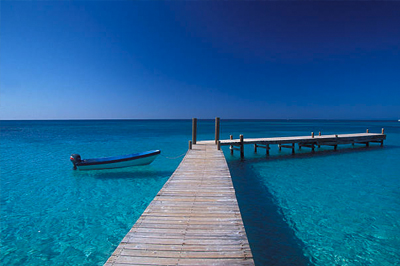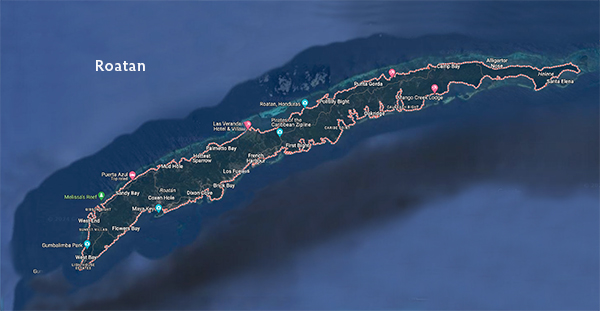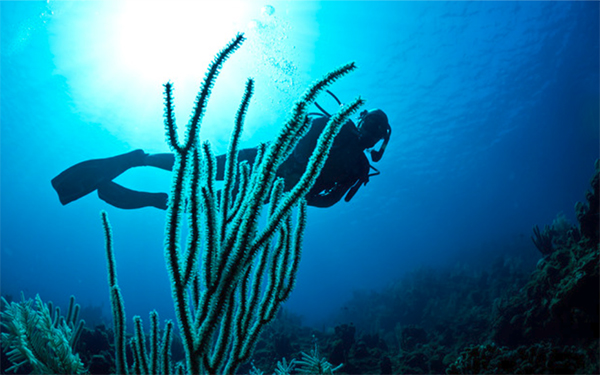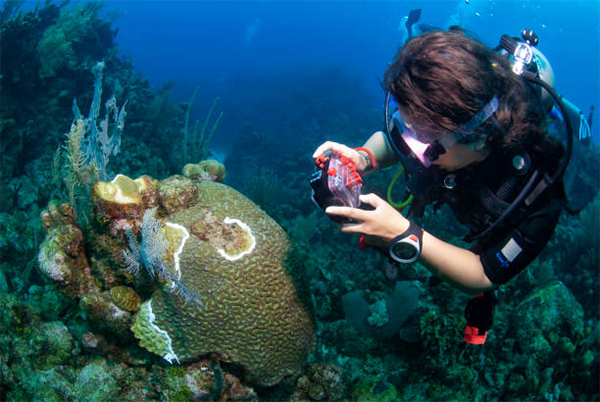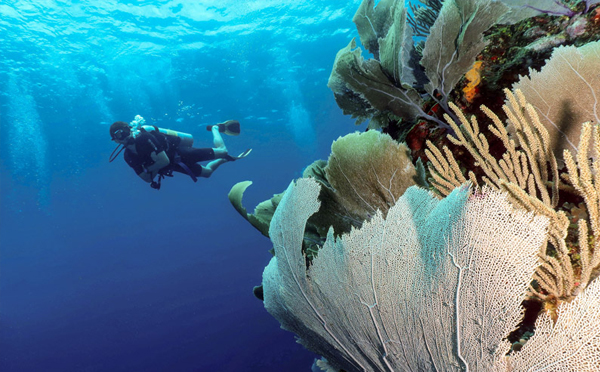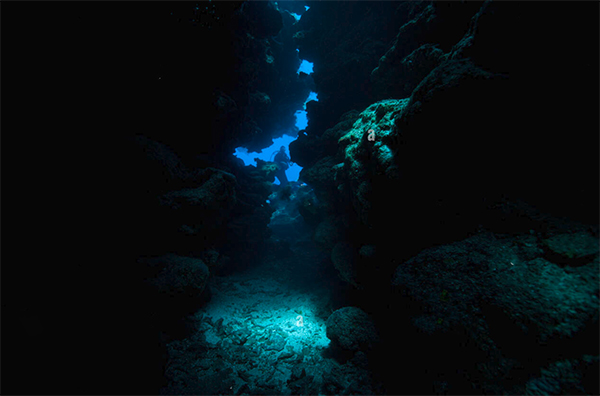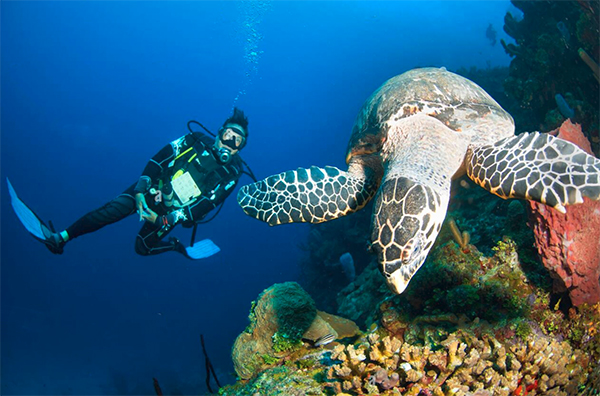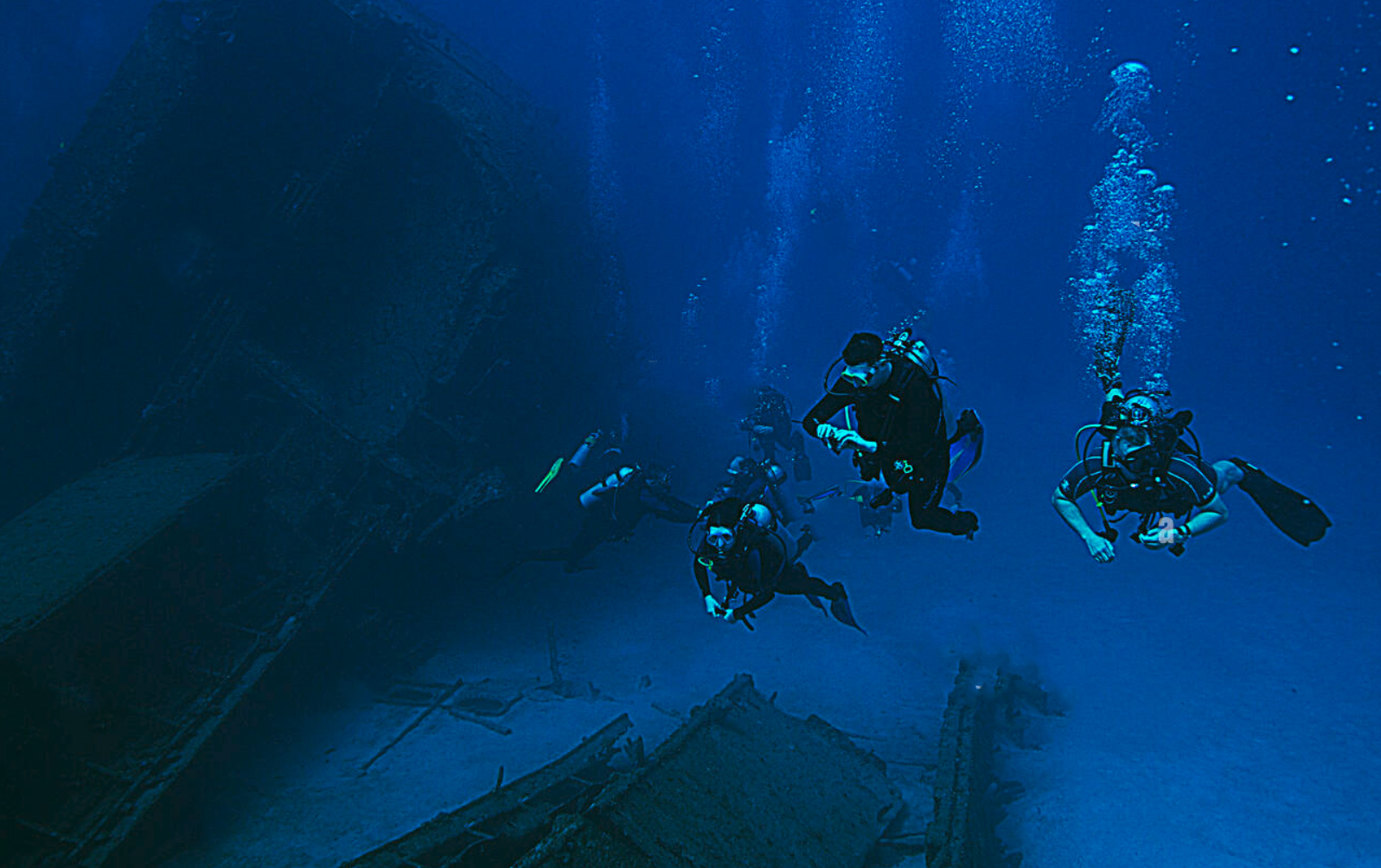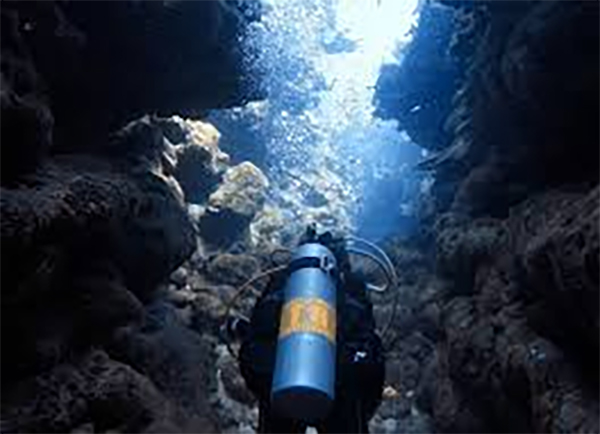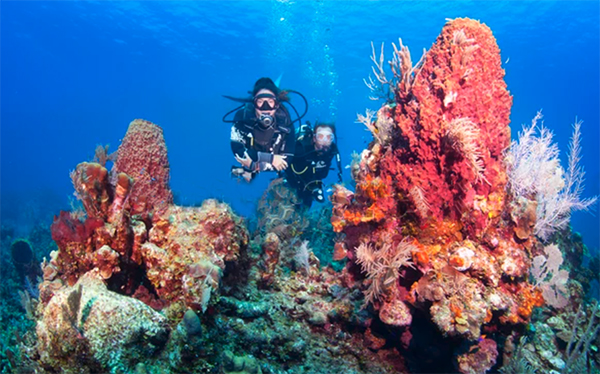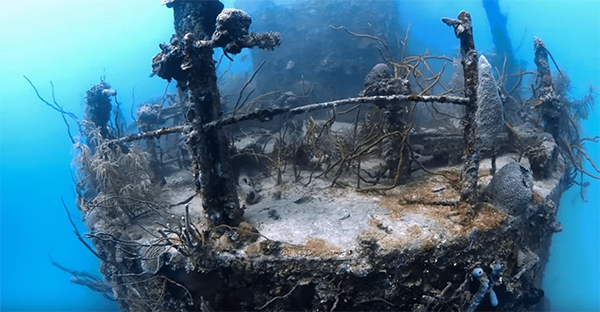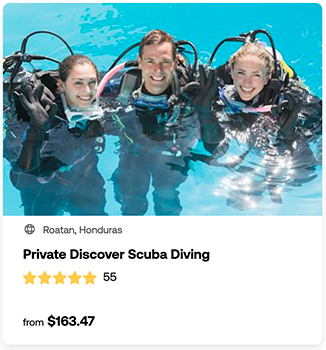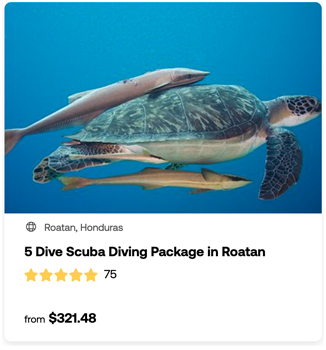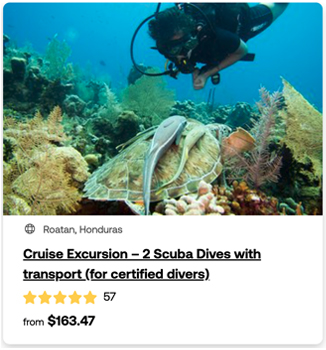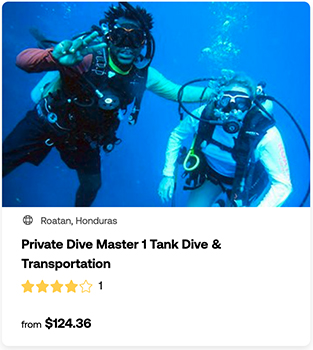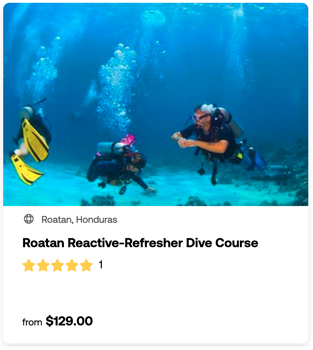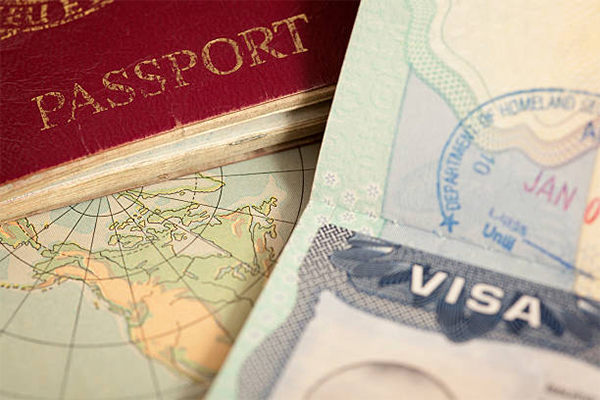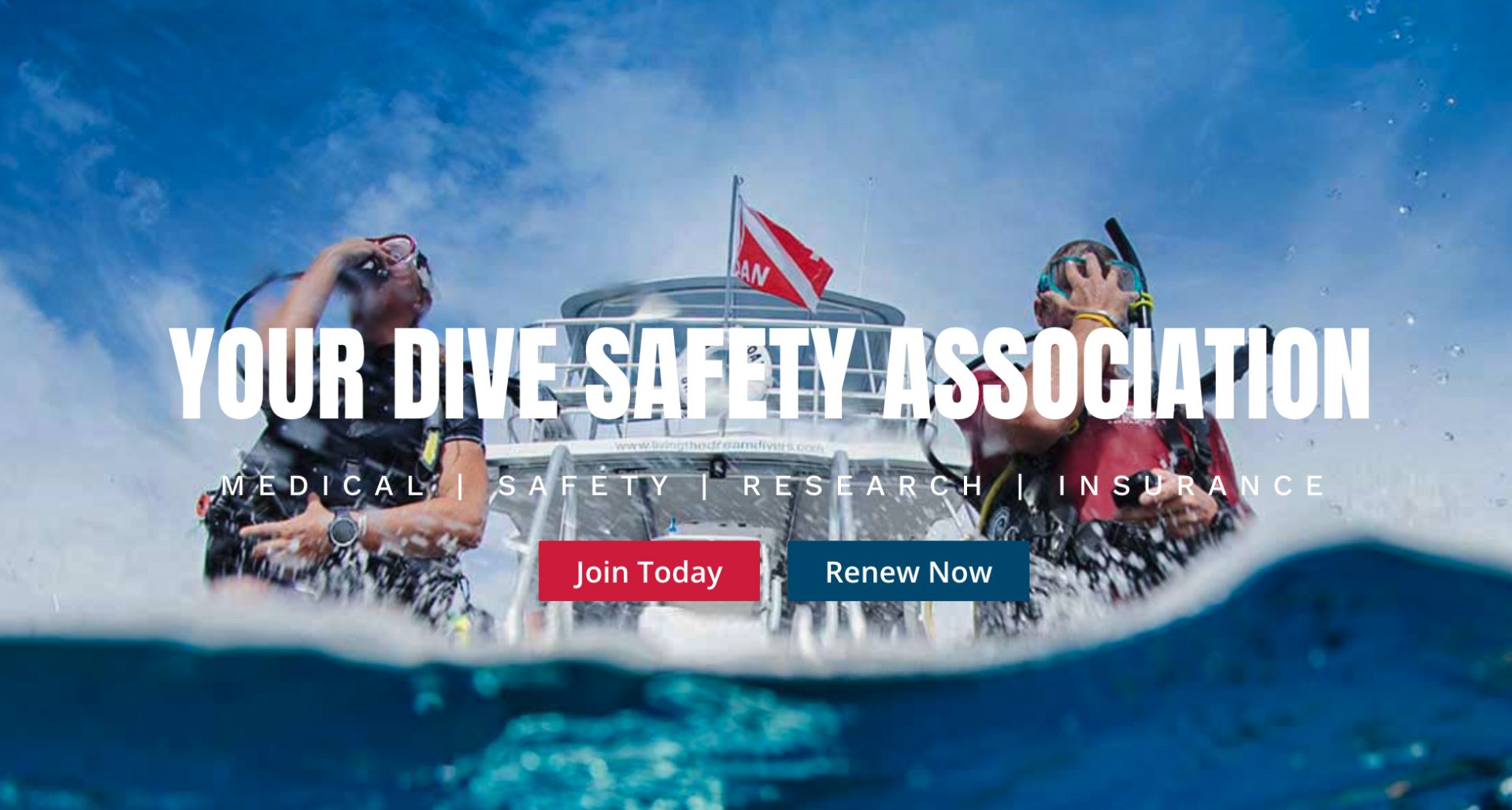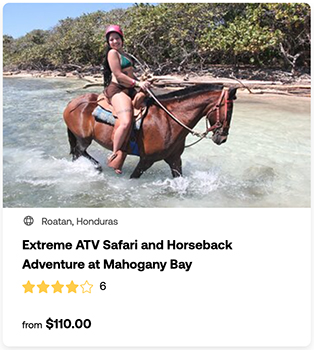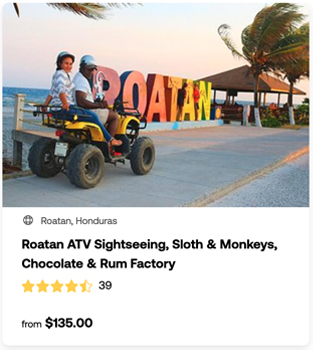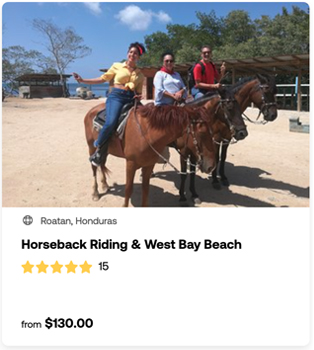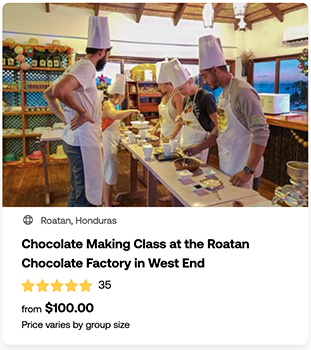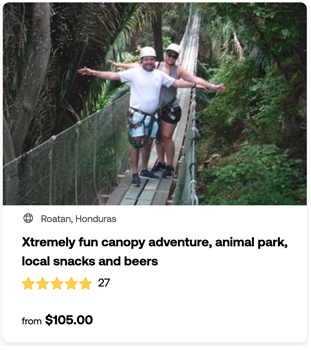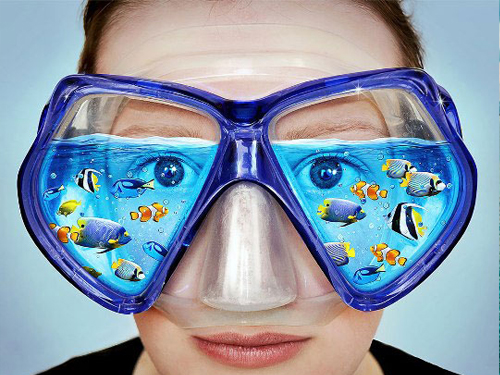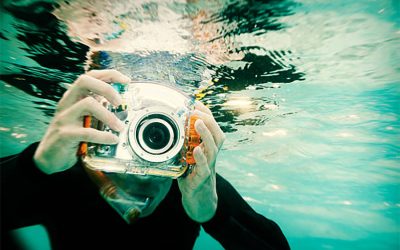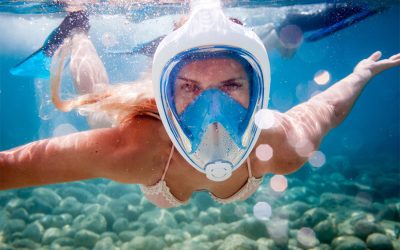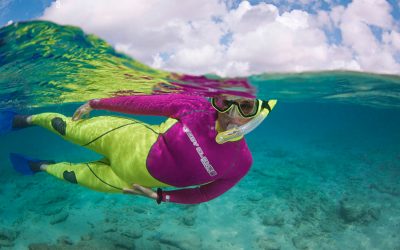Roatan Scuba Diving - A Journey Into Scuba Diving Paradise
Roatan, Honduras, a Caribbean gem, stands as the largest among Honduras’s Bay Islands, nestled just off the nation’s northern shore. Renowned for its unspoiled beaches, crystalline waters, and dynamic coral reefs, it beckons travelers in search of tropical bliss.
Roatan scuba diving unveils an aquatic wonderland, captivating divers of all proficiencies with its kaleidoscope of marine life and mesmerizing coral formations. Beneath warm waters boasting excellent visibility year-round, Roatan presents an ideal setting for delving into its vibrant reefs and intriguing shipwrecks.
Novice divers find ample support from the island’s myriad dive shops and seasoned instructors, offering certification courses and guided dives tailored to beginners. Must-visit sites like Sandy Bay and Half Moon Bay showcase shallow reefs teeming with vibrant fish, providing ideal settings for introductory dives and training sessions.
For seasoned divers seeking adrenaline-fueled adventures, Roatan scuba diving offers many exhilarating experiences, including drift dives along sheer walls, encounters with majestic eagle rays and reef sharks, and exploration of intricate coral gardens. Iconic sites such as Mary’s Place, renowned for its dramatic underwater canyons and swim-throughs, present thrilling challenges for experienced divers.
This site uses affiliate links which may earn a commission at no additional cost to you
Here's What You'll Learn About Roatan Scuba Diving
In this comprehensive article, you will embark on an immersive journey into the captivating world of Roatan scuba diving.
Whether you’re a novice diver planning your first dive trip or a seasoned enthusiast seeking new adventures, this article will equip you with the knowledge and inspiration to dive deep into the wonders of Roatan scuba diving.
Roatan Scuba Diving - Why Dive In Roatan, Honduras?
Roatan, nestled in the sparkling Caribbean Sea, beckons divers worldwide with its pristine coral reefs and unparalleled marine biodiversity. Here’s why this tropical paradise is a must-visit destination for underwater enthusiasts:
1. Pristine Coral Reefs: Roatan boasts some of the healthiest and most vibrant coral reefs in the Caribbean. These underwater ecosystems teem with an astonishing diversity of marine life, including colorful fish, sea turtles, eels, and more.
Diving in Roatan offers a rare opportunity to witness the beauty and resilience of thriving coral gardens, providing a feast for the eyes and a crucial habitat for countless species.
2. Marine Biodiversity: As part of the Mesoamerican Barrier Reef System, the second-largest barrier reef in the world, Roatan is a biodiversity hotspot. Divers can encounter a dazzling array of marine creatures, from tiny seahorses to majestic whale sharks. The island’s waters are home to over 95 species of coral and 500 species of fish, making each dive a captivating exploration of underwater life.
3. Variety of Dive Sites for All Skill Levels: Whether you’re a novice diver or a seasoned pro, Roatan offers a diverse range of dive sites to suit every skill level and interest. Shallow reefs near the shore are perfect for beginners, providing easy access to colorful coral gardens and gentle marine life.
Advanced divers can explore deeper walls, pinnacles, and wrecks, encountering thrilling currents and larger pelagic species.
4. Accessibility and Ease of Travel: Getting to Roatan is easier than ever, with direct flights available from major cities in the United States, Canada, and Europe. The island is served by Juan Manuel Gálvez International Airport, located just minutes from popular dive resorts and dive centers.
Once on the island, transportation is convenient, with taxis, rental cars, and water taxis readily available for exploring different dive sites and attractions.
In addition to its accessibility, Roatan offers a welcoming and laid-back atmosphere that appeals to travelers of all ages and backgrounds. From charming beachfront accommodations to bustling waterfront restaurants, the island provides a perfect blend of adventure and relaxation for dive enthusiasts and their companions.
Roatan stands out as a premier diving destination, offering unparalleled opportunities to explore pristine coral reefs, encounter diverse marine life, and enjoy convenient access to world-class dive sites.
Whether you’re a beginner or an experienced diver, Roatan promises an unforgettable underwater adventure that will leave you longing to return again and again.
Best Time to Dive Roatan: Navigating Weather Patterns and Seasons
Roatan Scuba Diving - 9 Best Dive Sites
Roatan, nestled within the Caribbean Sea, is a diver’s paradise boasting an array of dive sites catering to all skill levels and interests. From vibrant shallow coral gardens to dramatic deep walls and intriguing shipwrecks, the island offers an unparalleled underwater experience. Here’s a glimpse into the variety of dive sites awaiting exploration:
Variety of Roatan Dive Sites: Roatan’s underwater landscape is as diverse as it is captivating. Shallow coral gardens fringe the island’s coastline, teeming with colorful fish, sponges, and reef formations. These shallow sites are perfect for novice divers and snorkelers, offering calm waters and abundant marine life.
Venture further offshore, and you’ll encounter steep walls plunging into the abyss, adorned with lush corals and swaying sea fans. These deep walls provide an exhilarating backdrop for experienced divers, with opportunities to spot pelagic species cruising by in the blue depths.
For those intrigued by history, Roatan’s shipwrecks offer a fascinating glimpse into the past. Sunken vessels, such as the El Aguila and Odyssey Wreck, provide artificial reefs bustling with marine activity. These wrecks are magnets for marine life, attracting schools of fish, moray eels, and other fascinating creatures.
Marine Life: Roatan’s waters are home to a rich diversity of marine life, including tropical reef fish, rays, turtles, and sharks. Vibrant coral gardens provide shelter for an array of invertebrates, while deeper waters attract pelagic species such as barracudas, jacks, and reef sharks. Divers can also encounter macro critters like seahorses, nudibranchs, and frogfish hiding among the corals.
1. West End Wall - A Thrilling Underwater Adventure
The West End Wall is one of Roatan’s most iconic dive sites, renowned for its dramatic underwater topography and abundant marine life. Located off the western coast of the island, this site offers an exhilarating dive experience characterized by sheer walls, vibrant corals, and encounters with fascinating sea creatures.
Divers typically access the West End Wall from shore or by boat, descending into the crystal-clear waters that surround Roatan. As you submerge, you’ll be greeted by a breathtaking underwater landscape dominated by a towering wall that plunges into the depths below. The wall is adorned with colorful corals, sponges, and sea fans, creating a mesmerizing backdrop for your dive.
Descending along the wall’s edge, you’ll be treated to panoramic views of the Caribbean Sea stretching out before you, with visibility often exceeding 100 feet (30 meters). The wall itself is riddled with crevices, overhangs, and swim-throughs, providing ample opportunities for exploration and discovery. Keep an eye out for hidden critters tucked away in the nooks and crannies, such as moray eels, lobster, and octopus.
As you drift along the wall, you’ll encounter a diverse array of marine life, from colorful reef fish darting among the corals to larger pelagic species cruising by in the blue. Reef sharks, eagle rays, and barracudas are common sightings, adding an element of excitement to your dive. The West End Wall is also known for its vibrant macro life, with opportunities to spot nudibranchs, seahorses, and other small critters hiding in plain sight.
Marine Life: The West End Wall is teeming with marine biodiversity, offering divers the chance to encounter a wide variety of sea creatures. Common sightings include:
- Reef Fish: Parrotfish, angelfish, butterflyfish, and wrasse are just a few of the colorful reef fish that inhabit the waters around the West End Wall.
- Pelagic Species: Divers may spot larger marine animals such as reef sharks, eagle rays, barracudas, and jacks patrolling the open water.
- Macro Critters: The wall’s nooks and crannies provide shelter for a diverse array of macro life, including nudibranchs, seahorses, blennies, and shrimp.
- Coral and Sponges: The wall is adorned with vibrant corals, sponges, and sea fans, creating a stunning underwater landscape.
Recommended Skill Level: Due to the depth and sometimes strong currents, the West End Wall is best suited for experienced divers or those with advanced open water certifications. While some sections of the wall are accessible to divers of all skill levels, navigating the entire length of the wall may require good buoyancy control and comfort with drift diving.
2. Mary's Place -
Mary’s Place is a legendary dive site located on the south side of Roatan, renowned for its breathtaking underwater canyons and swim-throughs. Named after Mary, a local divemaster who discovered the site, Mary’s Place offers divers an exhilarating journey through a maze of coral formations and dramatic underwater landscapes.
Divers typically access Mary’s Place by boat, with the site located just a short ride from popular dive resorts and dive centers on the island. As you descend into the crystal-clear waters, you’ll be greeted by towering coral walls adorned with colorful sponges, sea fans, and an abundance of marine life.
The main feature of Mary’s Place is a series of underwater canyons, formed by ancient geological processes, which create a mesmerizing labyrinth for divers to explore.
Navigating through Mary’s Place, you’ll encounter narrow passages and swim-throughs, where shafts of sunlight pierce the water, illuminating the vibrant coral gardens below.
The canyons twist and turn, offering thrilling opportunities for divers to glide through the underwater tunnels and marvel at the beauty of the submerged world.
Marine Life: Mary’s Place is home to a diverse array of marine creatures, both large and small, making each dive an unforgettable underwater safari. Common sightings include:
- Reef Fish: Schools of colorful reef fish, including angelfish, butterflyfish, and sergeant majors, inhabit the coral gardens surrounding Mary’s Place.
- Macro Critters: The nooks and crannies of the underwater canyons provide shelter for an abundance of macro life, including nudibranchs, blennies, and shrimp.
- Larger Species: Divers may encounter larger marine animals such as reef sharks, eagle rays, and barracudas cruising along the walls or resting in the sandy patches between the canyons.
- Coral and Sponges: The walls of Mary’s Place are adorned with vibrant corals, sponges, and sea fans, creating a stunning backdrop for underwater photography and exploration.
Recommended Skill Level: Mary’s Place is suitable for divers of all skill levels, with options for both beginners and experienced enthusiasts. While some sections of the site are shallow and accessible to novice divers, navigating the underwater canyons and swim-throughs may require good buoyancy control and comfort with tight spaces.
Advanced divers will appreciate the opportunity to explore deeper sections of the site and discover hidden treasures within the maze-like formations.
Scuba diving Mary’s Place on Roatan offers an unparalleled underwater adventure, with its stunning coral formations, diverse marine life, and thrilling underwater canyons.
Whether you’re a novice diver seeking your first taste of underwater exploration or an experienced enthusiast craving new challenges, Mary’s Place promises an unforgettable dive experience in the heart of the Caribbean.
3. Spooky Channel
Spooky Channel, nestled off the coast of Roatan, Honduras, is a captivating dive site renowned for its mysterious underwater canyon and thrilling swim-throughs. This unique dive location offers an unforgettable experience for divers seeking adventure in the depths of the Caribbean Sea.
To reach Spooky Channel, divers typically embark on a short boat ride from dive resorts or dive centers located on the island’s western coast. As you descend into the azure waters, you’ll be greeted by a stunning underwater landscape characterized by towering coral formations and vibrant marine life.
The highlight of Spooky Channel is the eerie underwater canyon, which winds its way through the reef like a hidden labyrinth. As you enter the channel, shafts of sunlight pierce the water, casting an otherworldly glow on the surrounding coral walls. The canyon twists and turns, creating an exhilarating maze for divers to navigate.
Marine Life: Spooky Channel is home to a diverse array of marine creatures, from tiny invertebrates to larger pelagic species. Common sightings include:
- Reef Fish: Schools of colorful reef fish, including parrotfish, angelfish, and sergeant majors, inhabit the coral walls surrounding Spooky Channel.
- Macro Critters: The nooks and crannies of the underwater canyon provide shelter for an abundance of macro life, including nudibranchs, blennies, and shrimp.
- Larger Species: Divers may encounter larger marine animals such as moray eels, lionfish, and octopus hiding among the coral formations.
- Coral and Sponges: The walls of Spooky Channel are adorned with vibrant corals, sponges, and sea fans, creating a stunning backdrop for underwater photography and exploration.
Recommended Skill Level: Spooky Channel is best suited for intermediate to advanced divers due to the depth and sometimes challenging conditions. Navigating through the narrow passages and swim-throughs requires good buoyancy control and comfort with confined spaces.
While the site can be enjoyed by divers of all skill levels, beginners may find the currents and tight spaces intimidating and should dive with experienced guides.
Scuba diving Spooky Channel on Roatan offers a thrilling underwater adventure, with its mysterious underwater canyon, vibrant marine life, and exhilarating swim-throughs.
Whether you’re an experienced diver seeking new challenges or a novice enthusiast eager to explore the depths, Spooky Channel promises an unforgettable dive experience in the heart of the Caribbean.
4. Odyssey Wreck - Diving into Roatan's Underwater History
The Odyssey Wreck, situated off the coast of Roatan, Honduras, is a captivating dive site that offers divers the chance to explore a fascinating piece of maritime history. The wreck, a former cargo ship intentionally sunk to create an artificial reef, lies submerged in the crystal-clear waters of the Caribbean Sea.
Divers typically reach the Odyssey Wreck by boat from dive resorts or dive centers located on Roatan’s western coast. As you descend into the depths, the outline of the wreck gradually comes into view, revealing a massive steel structure covered in colorful coral and encrusted with marine life.
The Odyssey Wreck rests upright on the sandy seabed, with its bow pointing towards the surface and its stern reaching towards the ocean floor. The ship’s hull is adorned with vibrant corals, sponges, and sea fans, creating a stunning backdrop for underwater exploration and photography.
Marine Life: The Odyssey Wreck is teeming with marine biodiversity, offering divers the chance to encounter a wide variety of sea creatures. Common sightings include:
- Reef Fish: Schools of colorful reef fish, including snapper, grouper, and grunt, inhabit the nooks and crannies of the wreck.
- Larger Species: Divers may encounter larger marine animals such as barracudas, jacks, and nurse sharks patrolling the perimeter of the wreck.
- Coral and Sponges: The wreck’s steel structure provides a substrate for the growth of vibrant corals, sponges, and sea fans, attracting a diverse array of marine life.
- Macro Critters: The nooks and crannies of the wreck provide shelter for an abundance of macro life, including shrimp, crabs, and nudibranchs.
Recommended Skill Level: The Odyssey Wreck is suitable for divers of all skill levels, with options for both beginners and experienced enthusiasts. The wreck lies at a depth of around 60 to 80 feet (18 to 24 meters), making it accessible to divers with open water certification or higher.
While the wreck can be explored safely by divers of all skill levels, it’s recommended to dive with experienced guides to fully appreciate the site’s history and marine life.
Scuba diving the Odyssey Wreck on Roatan offers a fascinating glimpse into the island’s maritime history, with its massive steel structure and vibrant marine life.
Whether you’re a novice diver seeking your first wreck dive or an experienced enthusiast craving new adventures, the Odyssey Wreck promises an unforgettable underwater experience in the heart of the Caribbean.
5. Hole In the Wall
Hole in the Wall, located off the coast of Roatan, Honduras, is a mesmerizing dive site celebrated for its unique underwater feature and abundant marine life. As its name suggests, Hole in the Wall is characterized by a natural tunnel or chimney that pierces through the coral reef, creating an exhilarating passage for divers to navigate.
To reach Hole in the Wall, divers typically embark on a short boat ride from dive resorts or dive centers situated along Roatan’s western coast.
As you descend into the azure waters, the outline of the reef formation gradually comes into view, revealing a series of coral walls and overhangs adorned with colorful marine life.
The highlight of Hole in the Wall is the eponymous tunnel, which offers an awe-inspiring underwater passage for divers to explore. The tunnel twists and turns, winding its way through the coral reef like a hidden maze.
Shafts of sunlight filter through the water, casting an ethereal glow on the surrounding coral walls and illuminating the vibrant marine life within.
Marine Life: Hole in the Wall is teeming with marine biodiversity, offering divers the chance to encounter a wide variety of sea creatures. Common sightings include:
- Reef Fish: Schools of colorful reef fish, including angelfish, parrotfish, and butterflyfish, inhabit the coral walls surrounding Hole in the Wall.
- Larger Species: Divers may encounter larger marine animals such as moray eels, nurse sharks, and eagle rays lurking in the shadows of the reef formations.
- Coral and Sponges: The walls of Hole in the Wall are adorned with vibrant corals, sponges, and sea fans, creating a stunning backdrop for underwater exploration and photography.
- Macro Critters: The nooks and crannies of the reef provide shelter for an abundance of macro life, including shrimp, crabs, and nudibranchs.
Recommended Skill Level: Hole in the Wall is best suited for intermediate to advanced divers due to the depth and sometimes challenging conditions. Navigating through the tunnel requires good buoyancy control and comfort with confined spaces.
While the site can be enjoyed by divers of all skill levels, beginners may find the currents and tight spaces intimidating and should dive with experienced guides.
In conclusion, scuba diving Hole in the Wall on Roatan offers a thrilling underwater adventure, with its enigmatic tunnel, vibrant marine life, and stunning coral formations.
Whether you’re an experienced diver seeking new challenges or a novice enthusiast eager to explore the depths, Hole in the Wall promises an unforgettable dive experience in the heart of the Caribbean.
6. El Aguilla Wreck
The El Aguila Wreck, nestled off the coast of Roatan, Honduras, is a captivating dive site that offers divers the chance to explore a sunken ship steeped in history. The wreck, a former freighter intentionally sunk to create an artificial reef, lies submerged in the turquoise waters of the Caribbean Sea.
To reach the El Aguila Wreck, divers typically embark on a short boat ride from dive resorts or dive centers located on Roatan’s western coast. As you descend into the depths, the outline of the wreck gradually comes into view, revealing a massive steel structure covered in colorful coral and encrusted with marine life.
The El Aguila Wreck rests upright on the sandy seabed, with its bow pointing towards the surface and its stern reaching towards the ocean floor. The ship’s hull is adorned with vibrant corals, sponges, and sea fans, creating a stunning backdrop for underwater exploration and photography.
Marine Life: The El Aguila Wreck is a haven for marine biodiversity, offering divers the chance to encounter a wide variety of sea creatures. Common sightings include:
- Reef Fish: Schools of colorful reef fish, including snapper, grouper, and angelfish, inhabit the nooks and crannies of the wreck.
- Larger Species: Divers may encounter larger marine animals such as barracudas, jacks, and nurse sharks patrolling the perimeter of the wreck.
- Coral and Sponges: The wreck’s steel structure provides a substrate for the growth of vibrant corals, sponges, and sea fans, attracting a diverse array of marine life.
- Macro Critters: The nooks and crannies of the wreck provide shelter for an abundance of macro life, including shrimp, crabs, and nudibranchs.
Recommended Skill Level: The El Aguila Wreck is suitable for divers of all skill levels, with options for both beginners and experienced enthusiasts. The wreck lies at a depth of around 100 feet (30 meters), making it accessible to divers with open water certification or higher.
While the wreck can be explored safely by divers of all skill levels, it’s recommended to dive with experienced guides to fully appreciate the site’s history and marine life.
Scuba diving the El Aguila Wreck on Roatan offers a fascinating glimpse into the island’s maritime history, with its massive steel structure and vibrant marine life.
Whether you’re a novice diver seeking your first wreck dive or an experienced enthusiast craving new adventures, the El Aguila Wreck promises an unforgettable underwater experience in the heart of the Caribbean.
7. Bear's Den
Bear’s Den, situated off the coast of Roatan, Honduras, is a captivating dive site celebrated for its unique underwater formations and abundant marine life. Tucked away from the main dive routes, this hidden gem offers divers a tranquil and immersive experience in the depths of the Caribbean Sea.
To reach Bear’s Den, divers typically embark on a short boat ride from dive resorts or dive centers located along Roatan’s western coast. As you descend into the azure waters, the outline of the dive site gradually comes into view, revealing a series of coral walls and swim-throughs nestled within the reef.
The highlight of Bear’s Den is its intricate network of swim-throughs and caverns, which provide an exhilarating maze for divers to explore. These underwater passages twist and turn, offering glimpses of sunlight filtering through the water and illuminating the vibrant coral formations within.
Marine Life: Bear’s Den is teeming with marine biodiversity, offering divers the chance to encounter a wide variety of sea creatures. Common sightings include:
- Reef Fish: Schools of colorful reef fish, including snapper, grunts, and wrasse, inhabit the coral walls surrounding Bear’s Den.
- Larger Species: Divers may encounter larger marine animals such as barracudas, jacks, and grouper patrolling the perimeter of the dive site.
- Coral and Sponges: The walls of Bear’s Den are adorned with vibrant corals, sponges, and sea fans, creating a stunning backdrop for underwater exploration and photography.
- Macro Critters: The nooks and crannies of the dive site provide shelter for an abundance of macro life, including shrimp, crabs, and nudibranchs.
Recommended Skill Level: Bear’s Den is suitable for divers of all skill levels, with options for both beginners and experienced enthusiasts. The dive site features shallow areas suitable for novice divers, as well as deeper sections and swim-throughs that offer challenges for more experienced divers.
While Bear’s Den can be enjoyed by divers of all skill levels, it’s recommended to dive with experienced guides, especially when navigating through the swim-throughs and caverns.
Good buoyancy control and comfort with enclosed spaces are essential for a safe and enjoyable dive at this site.
Scuba diving Bear’s Den on Roatan offers a tranquil and immersive underwater experience, with its hidden swim-throughs, vibrant marine life, and stunning coral formations.
Whether you’re a novice diver seeking new adventures or an experienced enthusiast craving unique underwater landscapes, Bear’s Den promises an unforgettable dive experience in the heart of the Caribbean.
8. Black Hills
Black Hills, nestled off the coast of Roatan, Honduras, is a captivating dive site known for its unique underwater topography and diverse marine life. This hidden gem offers divers a thrilling exploration of underwater hills and valleys, creating an unforgettable diving experience in the Caribbean Sea.
Accessing Black Hills typically involves a short boat ride from dive resorts or dive centers located along Roatan’s western coast. As divers descend into the azure waters, the silhouette of the dive site emerges, revealing a series of underwater hills and valleys carpeted with colorful corals and sponges.
The highlight of Black Hills is its undulating landscape, reminiscent of a submerged mountain range. Divers can navigate through winding valleys and ascend over towering hills, offering breathtaking panoramic views of the surrounding reef.
Marine Life: Black Hills is teeming with marine biodiversity, offering divers the chance to encounter a wide variety of sea creatures. Common sightings include:
- Reef Fish: Schools of colorful reef fish, including snapper, grunts, and tangs, inhabit the coral-covered hills and valleys of Black Hills.
- Larger Species: Divers may encounter larger marine animals such as barracudas, jacks, and moray eels patrolling the perimeter of the dive site.
- Coral and Sponges: The hills and valleys of Black Hills are adorned with vibrant corals, sponges, and sea fans, creating a stunning backdrop for underwater exploration and photography.
- Macro Critters: The nooks and crannies of the dive site provide shelter for an abundance of macro life, including shrimp, crabs, and nudibranchs.
Recommended Skill Level: Black Hills is suitable for divers of all skill levels, with options for both beginners and experienced enthusiasts. The dive site features shallow areas suitable for novice divers, as well as deeper sections and challenging terrain that offer excitement for more experienced divers.
While Black Hills can be enjoyed by divers of all skill levels, it’s recommended to dive with experienced guides, especially when navigating through the hills and valleys. Good buoyancy control and comfort with varying depths are essential for a safe and enjoyable dive at this site.
Scuba diving Black Hills on Roatan offers a thrilling exploration of underwater terrain, with its submerged hills and valleys, vibrant marine life, and stunning coral formations.
Whether you’re a novice diver seeking new adventures or an experienced enthusiast craving unique underwater landscapes, Black Hills promises an unforgettable dive experience in the heart of the Caribbean.
9. Prince Albert Wreck
The Prince Albert Wreck, located off the coast of Roatan, Honduras, is a captivating dive site steeped in maritime history and teeming with marine biodiversity. This sunken vessel, intentionally sunk to create an artificial reef, offers divers the opportunity to explore a fascinating underwater world filled with relics of the past and vibrant marine life.
Accessing the Prince Albert Wreck typically involves a short boat ride from dive resorts or dive centers situated along Roatan’s western coast.
As divers descend into the clear blue waters, the silhouette of the wreck gradually materializes, revealing a massive steel structure encrusted with corals, sponges, and marine life.
The wreck of the Prince Albert rests upright on the sandy seabed, with its hull intact and its decks accessible to divers. The ship’s superstructure provides a habitat for a diverse array of marine creatures, while its corridors and compartments offer opportunities for exploration and discovery.
Marine Life: The Prince Albert Wreck is a thriving ecosystem, home to a wide variety of marine species. Common sightings include:
- Reef Fish: Schools of colorful reef fish, including snapper, grunts, and angelfish, inhabit the nooks and crannies of the wreck.
- Larger Species: Divers may encounter larger marine animals such as barracudas, jacks, and nurse sharks patrolling the perimeter of the wreck.
- Coral and Sponges: The wreck’s steel structure provides a substrate for the growth of vibrant corals, sponges, and sea fans, creating a stunning backdrop for underwater exploration and photography.
- Macro Critters: The nooks and crannies of the wreck provide shelter for an abundance of macro life, including shrimp, crabs, and nudibranchs.
Recommended Skill Level: The Prince Albert Wreck is suitable for divers of all skill levels, with options for both beginners and experienced enthusiasts. The wreck lies at a depth of around 60 to 80 feet (18 to 24 meters), making it accessible to divers with open water certification or higher.
While the wreck can be explored safely by divers of all skill levels, it’s recommended to dive with experienced guides, especially when navigating through the ship’s corridors and compartments. Good buoyancy control and comfort with enclosed spaces are essential for a safe and enjoyable dive at this site.
Scuba diving the Prince Albert Wreck on Roatan offers a fascinating glimpse into the island’s maritime history, with its intact hull and vibrant marine life.
Whether you’re a novice diver seeking your first wreck dive or an experienced enthusiast craving new adventures, the Prince Albert Wreck promises an unforgettable underwater experience in the heart of the Caribbean
Check Out These Exciting Scuba Diving Excursions On Roatan
Roatan Scuba Diving - Safety Tips and Emergency Preparedness
Scuba diving in Roatan, Honduras, offers a thrilling underwater adventure amidst vibrant coral reefs and diverse marine life. However, ensuring safety while exploring the depths is paramount.
Here are essential safety considerations, dive conditions, potential hazards, and emergency facilities and services to keep in mind:
Safety Considerations:
- Dive Certification: Ensure you are a certified diver before embarking on dives in Roatan. Dive operators typically require proof of certification, and diving without proper training can pose significant risks.
- Health and Fitness: Be in good physical health and disclose any medical conditions to your dive operator. Certain health issues, such as respiratory problems or heart conditions, may impact your ability to dive safely.
- Equipment Inspection: Thoroughly inspect your dive gear before each dive, including regulators, BCDs (buoyancy control devices), and dive computers. Ensure all equipment is in proper working condition and properly fitted.
- Buddy System: Always dive with a buddy and maintain visual contact throughout the dive. The buddy system enhances safety by providing assistance in case of emergencies.
- Safety Briefings: Listen attentively to dive briefings provided by your dive operator. Familiarize yourself with emergency procedures, hand signals, and dive plans before entering the water.
Dive Conditions and Potential Hazards:
- Visibility: While Roatan typically boasts excellent visibility, conditions can vary depending on weather and currents. Be prepared for changes in visibility and adjust your dive plan accordingly.
- Currents: Strong currents can occur in certain dive sites around Roatan, particularly on exposed reefs and deep walls. Stay close to your buddy, conserve energy, and avoid diving in areas with unsafe currents.
- Marine Life: While encounters with marine life are a highlight of diving in Roatan, some species, such as lionfish and fire coral, can pose risks. Familiarize yourself with local marine life and exercise caution around potentially hazardous species.
- Depth: Many dive sites in Roatan feature steep walls and drop-offs, offering opportunities for deep diving. Dive within your certification limits and practice proper buoyancy control to avoid exceeding safe depths.
Emergency Facilities and Services:
- Hyperbaric Chamber: Roatan is equipped with a hyperbaric chamber to treat decompression sickness (DCS) and other diving-related emergencies. The chamber is located at Anthony’s Key Resort and is accessible to divers in need of medical assistance.
- Emergency Response: Dive operators and resorts on Roatan maintain emergency response protocols and have access to trained dive professionals and medical personnel. In the event of an emergency, contact your dive operator immediately for assistance.
Scuba diving in Roatan offers an unparalleled underwater experience, but it’s essential to prioritize safety at all times.
By adhering to safety considerations, understanding dive conditions and potential hazards, and familiarizing yourself with emergency facilities and services, you can enjoy a safe and memorable diving adventure in the waters of Roatan, Honduras.
Visas and Other Requirements for Roatan, Honduras:
When planning a trip to Roatan, Honduras, it’s essential to understand the visa requirements, travel insurance needs, and health considerations to ensure a smooth and enjoyable experience.
Here’s what you need to know:
Visa Requirements: Visa requirements for visiting Roatan, Honduras, vary depending on your nationality. Citizens of many countries, including the United States, Canada, European Union member states, and many others, do not require a visa for stays of up to 90 days for tourism purposes.
However, it’s crucial to check the specific visa requirements for your nationality before traveling to Roatan. You can typically find this information on the official website of the Honduran embassy or consulate in your country.
Travel Insurance for Divers: Travel insurance is highly recommended for anyone planning to dive in Roatan or engage in any other adventurous activities. While diving is a thrilling and rewarding experience, it also carries certain risks, including decompression sickness, accidents, and equipment damage.
Travel insurance can provide coverage for medical emergencies, evacuation services, trip cancellations, and lost or damaged dive gear. Make sure your travel insurance policy includes coverage for scuba diving activities and provides adequate protection for your specific needs.
Health Considerations: Before traveling to Roatan, it’s essential to be aware of any necessary vaccinations or health precautions recommended for visitors to Honduras. While there are no specific vaccinations required for entry into Roatan, it’s advisable to be up to date on routine vaccinations such as measles, mumps, rubella, diphtheria, tetanus, pertussis, and influenza.
Additionally, travelers should take precautions to prevent mosquito-borne illnesses such as Zika, dengue fever, and chikungunya by using insect repellent, wearing long-sleeved clothing, and staying in accommodations with screens or air conditioning.
Divers should also be aware of the potential risks associated with diving, such as barotrauma, decompression sickness, and ear infections. It’s essential to dive within your limits, undergo proper training, and listen to your dive instructor or guide. If you have any pre-existing medical conditions or concerns, consult with your healthcare provider before diving in Roatan.
With proper preparation and awareness, you can make the most of your dive adventure in this stunning Caribbean destination.
Roatan Diving - Travel And Accommodations
Check Out Deals On Flights To Roatan (RTB)
Check Out Great Deals On Accommodations On Roatan
Diver Alert Network (DAN): The Lifeline Below - Exploring Its Services and Impact
Diving, whether for recreational or professional purposes, presents unique challenges and risks that demand specialized safety protocols and support systems. Among these, the Diver Alert Network (DAN) stands out as a cornerstone of diver safety worldwide.
Established with the mission of promoting safe diving through research, education, and emergency assistance, DAN has become an indispensable resource for divers and the diving industry.
Services Offered by DAN: Central to DAN’s mission is its provision of critical services aimed at safeguarding divers’ well-being before, during, and after their underwater excursions. These services include:
1. Medical Information Hotline: DAN operates a round-the-clock hotline staffed by medical professionals well-versed in dive medicine. Divers can seek advice on pre-dive health considerations, decompression illness, injury management, and other medical concerns.
2. Dive Safety Education: Recognizing the importance of informed decision-making in preventing accidents, DAN offers a wealth of educational resources. These range from online courses covering topics like dive safety, first aid, and emergency oxygen administration to in-person seminars and workshops conducted by seasoned dive safety experts.
3. Research and Advocacy: DAN is at the forefront of dive medicine research, conducting studies to enhance our understanding of diving physiology, injury mechanisms, and risk factors. Findings from these studies inform the development of evidence-based guidelines and best practices, which DAN actively promotes within the diving community and industry stakeholders.
4. Emergency Evacuation and Assistance: In the event of a diving-related emergency, DAN’s global network facilitates timely evacuation and medical treatment for affected individuals. Whether through direct intervention or coordination with local emergency services, DAN ensures that divers receive the care they need, wherever they may be.
Beyond The Dive - Exciting Roatan Island Activities
Scuba Diving in Roatan, Honduras: FAQ
General:
Do I need to be certified to dive in Roatan?
Yes, you need a valid scuba diving certification to dive in Roatan. Open Water Diver is the minimum required for most dives.
What is the best time to go diving in Roatan?
Roatan is great for diving year-round, but the dry season (March-September) offers the best visibility and calmer seas.
What are the water temperatures like?
Warm! Expect temperatures ranging from 78-84°F (25-29°C). Most divers use a 3mm wetsuit or even just a skin.
What currency is used in Roatan?
The official currency is the Honduran Lempira, but US dollars are widely accepted.
How do I get around the island?
Taxis, buses, and rental cars are available.
Logistics:
What are the typical dive schedules?
Most dive shops offer morning (2 tanks) and afternoon (1 tank) dives. Some offer shore diving options as well.
Do I need to bring my own equipment?
Most dive shops offer rental equipment, but it’s always better to bring your own if you have it.
What are the costs involved?
Dive prices vary depending on the operator, number of dives, and type of dive. Expect to pay around $50-$100 per dive.
Do I need travel insurance?
It’s highly recommended to get travel insurance that covers diving activities.
Diving:
What kind of diving is there in Roatan?
Roatan offers a variety of diving experiences, from coral reefs and wrecks to wall dives and swim-throughs.
What marine life can I expect to see?
Expect to see a wide variety of tropical fish, turtles, sharks, rays, eels, and more.
Are there any dive sites for beginners?
Yes, there are many dive sites suitable for beginners. Dive shops will recommend appropriate sites based on your experience.
What are some must-see dive sites?
Popular dive sites include Mary’s Place, Shark Bay, Spooky Channel, and West End Wall.
Can I do night diving?
Yes, many dive shops offer night dives, which offer a unique opportunity to see nocturnal marine life.
Additional:
Are there any safety concerns I should be aware of?
Always follow your dive guide’s instructions and dive within your limits. Be aware of currents and be respectful of the marine environment.
What are some eco-friendly diving practices?
Choose dive operators committed to sustainable practices. Avoid touching or disturbing marine life and dispose of waste properly.
What else is there to do on Roatan besides diving?
There are plenty of other activities to enjoy on Roatan, such as snorkeling, fishing, kayaking, hiking, and exploring the local culture.
Related Articles
The Ultimate Diving Equipment List: Essential Gear For Every Diver
13 Best Scuba Gear Packages: Beginner To Advanced
Best Scuba Diving In Hawaii: Your Complete Guide To Paradise
Scuba Diving St.Thomas: Your Ultimate Guide To Underwater Exploration
Bonaire Snorkeling Adventure: A Snorkeler’s Complete Guide
Best Caribbean Sailing Destinations: A Sailor’s Guide To Paradise
From Beginner to Expert: Navigating Roatan Scuba Diving Experiences
Dive The World
Check Out Related Posts
Best Scuba Diving Camera For Beginners: The Top Picks For 2024
Selecting the best scuba diving camera for beginners is crucial as it can significantly enhance their underwater experience and immortalize unforgettable moments beneath the surface. These cameras enable divers to capture the awe-inspiring beauty of vibrant marine...
7 Best Full Face Snorkel Masks for Every Adventurer
Gazing at the wonders of the underwater world is an incredible experience, but traditional snorkel gear can sometimes get in the way. If you're looking to explore the reef with ease and maximum comfort, then a full face snorkel mask might be for you. These innovative...
Bonaire Snorkeling Adventures: A Snorkler’s Complete Guide
Bonaire beckons snorkelers to explore its enchanting underwater world, making it a premier destination for those seeking unparalleled experiences beneath the waves. With its fringing coral reefs, protected marine parks, and abundant marine life, Bonaire snorkeling...


